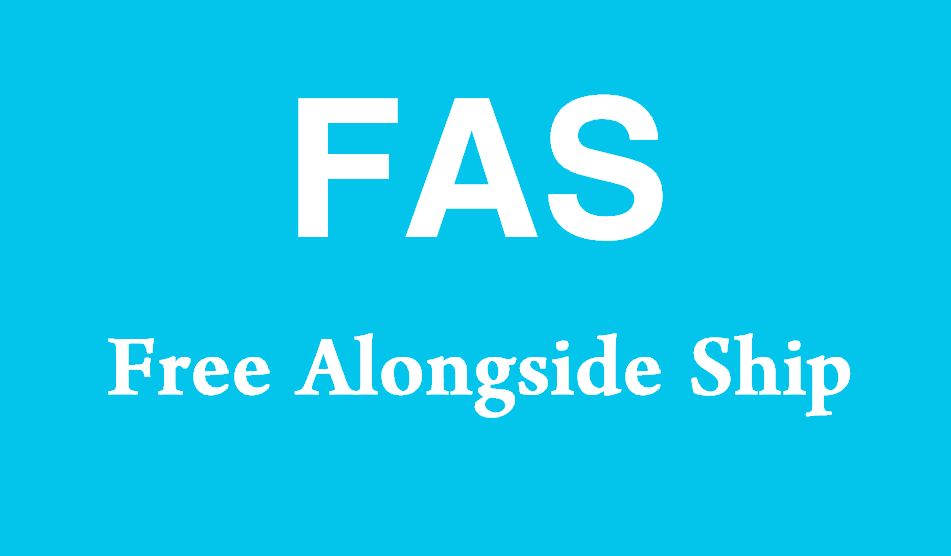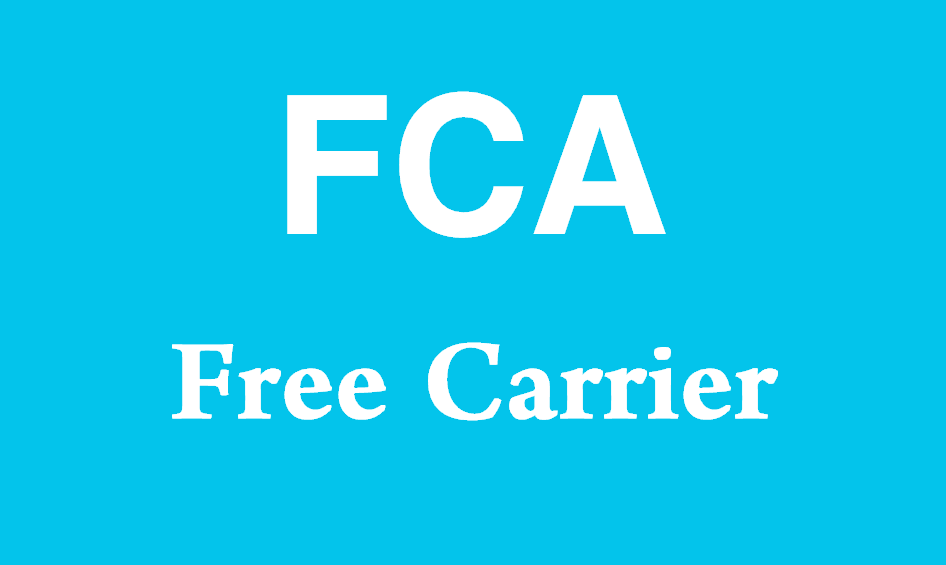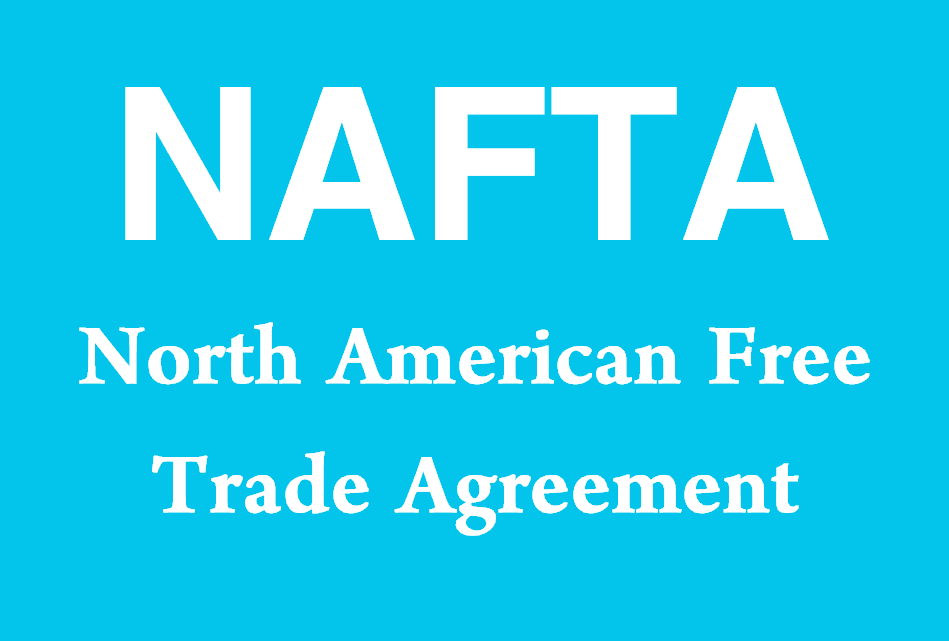What does FAS stand for?
FAS stands for Free Alongside Ship. This international trade term, established by the International Chamber of Commerce (ICC), specifies that the seller fulfills their delivery obligation once the goods are placed alongside the vessel at the named port of shipment. From that point, the buyer assumes responsibility for all costs and risks associated with the transport of the goods. Understanding FAS is crucial for businesses involved in international shipping and trade, as it clarifies the division of responsibilities and costs between the seller and the buyer.

Comprehensive Explanation of Free Alongside Ship
Definition and Importance
What is Free Alongside Ship (FAS)?
Free Alongside Ship (FAS) is an Incoterm used in international trade to define the point at which the seller’s obligations are fulfilled. Under FAS terms, the seller must deliver the goods alongside the vessel at the specified port of shipment. From this point onwards, the buyer assumes all risks and costs, including loading, ocean freight, insurance, and further transportation.
Key Features of FAS
- Delivery Point: The seller delivers the goods alongside the vessel at the named port of shipment.
- Risk Transfer: Risk transfers from the seller to the buyer once the goods are placed alongside the ship.
- Cost Responsibility: The seller is responsible for costs up to the point of delivery alongside the vessel, while the buyer covers costs from that point forward.
- Export Clearance: The seller must clear the goods for export, including obtaining necessary licenses and completing customs formalities.
Responsibilities of the Seller and Buyer
Seller’s Responsibilities
- Preparation and Packaging: The seller must prepare and package the goods appropriately for transport.
- Delivery to Port: The seller is responsible for delivering the goods to the port of shipment and placing them alongside the vessel.
- Export Clearance: The seller handles all export clearance procedures, including obtaining licenses and completing customs documentation.
- Cost Coverage: The seller covers all costs associated with delivering the goods to the port and placing them alongside the ship.
Buyer’s Responsibilities
- Transportation Costs: The buyer is responsible for the cost of loading the goods onto the vessel, ocean freight, insurance, and any further transportation to the final destination.
- Import Clearance: The buyer handles all import clearance procedures, including duties, taxes, and customs formalities.
- Risk Management: The buyer assumes all risks of loss or damage once the goods are placed alongside the vessel.
- Insurance: The buyer should arrange for adequate insurance coverage from the point the goods are alongside the vessel.
Advantages of FAS
Cost Control for Sellers
FAS allows sellers to limit their cost responsibility to delivering the goods alongside the vessel, without the additional burden of covering loading and shipping costs. This can provide better cost control and predictability for sellers.
Risk Management for Buyers
Buyers who prefer to have control over the shipping process, including selecting carriers and managing insurance, may find FAS advantageous. This allows buyers to manage and mitigate risks according to their preferences and requirements.
Clear Division of Responsibilities
FAS provides a clear division of responsibilities and costs between the seller and the buyer. This clarity helps prevent misunderstandings and disputes, ensuring a smoother transaction process.
Challenges and Considerations
Coordination and Timing
Effective coordination between the seller and the buyer is crucial under FAS terms. The seller must ensure timely delivery of goods alongside the vessel to meet the shipping schedule, while the buyer must arrange for loading and further transportation.
Documentation and Compliance
Accurate and compliant documentation is essential for a successful FAS transaction. Both parties must ensure that all necessary export and import documentation is prepared and submitted correctly to avoid delays and additional costs.
Risk of Damage During Loading
Since the risk transfers to the buyer once the goods are alongside the vessel, any damage during loading is the buyer’s responsibility. Buyers must ensure proper handling and loading procedures to minimize the risk of damage.
Comparison with Other Incoterms
FAS vs. FOB (Free on Board)
- Delivery Point: Under FAS, the seller delivers the goods alongside the vessel, while under FOB, the seller is responsible for loading the goods onto the vessel.
- Risk Transfer: Risk transfers to the buyer once the goods are alongside the vessel under FAS, whereas under FOB, risk transfers once the goods are loaded onto the ship.
FAS vs. CIF (Cost, Insurance, and Freight)
- Cost Responsibility: Under FAS, the buyer covers the costs of loading, shipping, and insurance. Under CIF, the seller covers the costs of shipping and insurance to the port of destination.
- Risk Transfer: Risk transfers to the buyer alongside the vessel under FAS, while under CIF, risk transfers once the goods are loaded onto the vessel.
Practical Applications of FAS
Sea Freight
FAS is typically used for sea or inland waterway transport. The seller delivers the goods to the port and places them alongside the vessel, from where the buyer assumes responsibility for loading, shipping, and further transportation.
Large and Bulk Shipments
FAS is suitable for large and bulk shipments where the buyer prefers to handle loading and shipping logistics. This is common in industries such as mining, agriculture, and heavy machinery.
Documentation Required in FAS
Commercial Invoice
The commercial invoice issued by the seller details the goods sold, their value, and terms of sale. It is used for customs clearance and financial transactions.
Bill of Lading
A bill of lading is issued by the carrier once the goods are loaded onto the vessel. It serves as a receipt for the goods and a contract of carriage between the shipper and the carrier.
Export License
If required, the seller must obtain an export license, permitting the export of goods from the country of origin. This document ensures compliance with local export regulations.
Packing List
A packing list details the contents, packaging, and weight of the shipment. It is used for customs clearance and helps the carrier and buyer verify the shipment contents.
Best Practices for FAS Transactions
Effective Communication
Maintain clear and consistent communication between the seller and buyer to ensure all aspects of the transaction are understood and agreed upon. This includes delivery locations, timing, and carrier details.
Accurate Documentation
Ensure all documentation is accurately prepared and compliant with regulatory requirements. Double-check details to avoid errors that could lead to delays or additional costs.
Risk Management
The buyer should arrange for adequate insurance coverage to manage risks from the point the goods are alongside the vessel. Understanding and mitigating these risks helps protect the value of the shipment.
Future Trends in FAS and International Trade
Digitalization and Automation
The adoption of digital technologies and automation in international trade is streamlining FAS transactions. Electronic documentation, real-time tracking, and automated customs processes enhance efficiency and reduce the potential for errors.
Sustainability and Green Logistics
There is a growing focus on sustainability in logistics and international trade. Implementing green logistics practices, such as optimizing transport routes and using eco-friendly packaging, aligns with global sustainability goals.
Enhanced Security Measures
As security concerns evolve, enhanced measures are being implemented to protect shipments. This includes the use of smart containers, GPS tracking, and blockchain technology to ensure the integrity and security of goods in transit.
Notes to Importers
Understanding the Impact of Free Alongside Ship
For importers, understanding the implications of FAS terms is essential for effective logistics management and cost control. FAS provides flexibility and control over the transportation process, allowing importers to select preferred carriers and manage risks.
Key Considerations for Importers
Selecting the Right Carrier
Importers should carefully select carriers based on reliability, cost, and service quality. Working with reputable carriers ensures timely and secure delivery of goods.
Insurance Coverage
Given that the risk transfers to the buyer at the point of delivery alongside the vessel, it is crucial to arrange comprehensive insurance coverage to protect against potential damages or losses during transit.
Compliance with Import Regulations
Importers must ensure compliance with all import regulations, including obtaining necessary licenses and preparing accurate documentation. This helps avoid delays and penalties.
Coordination with Suppliers
Effective coordination with suppliers is essential to ensure timely delivery and accurate documentation. Clear communication and planning help streamline the FAS process.
Sample Sentences Using FAS
- “The seller agreed to deliver the goods under FAS terms, ensuring export clearance and delivery alongside the vessel.”
- Meaning: The seller will handle export formalities and deliver the goods to the port alongside the vessel.
- “Using FAS allows the buyer to control the loading and shipping process from the port of shipment.”
- Meaning: FAS terms give the buyer control over how the goods are loaded and shipped from the port.
- “The risk of loss or damage transfers to the buyer once the goods are placed alongside the vessel under FAS.”
- Meaning: Under FAS terms, the buyer assumes the risk once the goods are alongside the vessel.
- “FAS is a suitable Incoterm for bulk shipments where the buyer prefers to manage the transportation logistics.”
- Meaning: FAS is ideal for large shipments where the buyer wants to handle the transport details.
- “The seller handled the export clearance and delivered the shipment to the port, as per FAS terms.”
- Meaning: The seller completed export procedures and delivered the goods to the port according to FAS terms.
Other Meanings of FAS
| Acronym | Full Form | Description |
|---|---|---|
| FAS | Fascia | A connective tissue that surrounds muscles, blood vessels, and nerves. |
| FAS | Fetal Alcohol Syndrome | A condition in a child resulting from alcohol exposure during the mother’s pregnancy. |
| FAS | Financial Accounting Standards | Standards and guidelines for financial accounting and reporting. |
| FAS | Free Access System | A system that allows free access to certain resources or information. |
| FAS | Faculty of Arts and Sciences | An academic division within a university offering courses in arts and sciences. |
| FAS | Field Application Scientist | A professional who provides scientific support and expertise in the field. |
| FAS | Fleet Assignment System | A system used by airlines to assign aircraft to routes. |
| FAS | Fixed Asset System | An accounting system used to manage a company’s fixed assets. |
| FAS | Flexible Automation System | A system designed to automate production processes flexibly. |
| FAS | Family and School | An organization or initiative focused on family and educational support. |
| FAS | Functional and Spatial Analysis | An analysis technique used in urban planning and architecture. |
| FAS | Foreign Agricultural Service | A branch of the U.S. Department of Agriculture that deals with international trade and development. |
| FAS | Forward Air Slope | The front slope of an air defense artillery position. |
| FAS | Fluorescence-Activated Sorting | A method used in cell sorting and analysis. |
| FAS | Food Additives and Supplements | Ingredients added to food to preserve flavor or enhance taste and appearance. |
| FAS | First Aid Station | A designated area where first aid services are provided. |
| FAS | Fuel Allocation System | A system used to allocate fuel resources. |
| FAS | Fire Alarm System | A system designed to detect and alert occupants of fire. |
| FAS | Foreign Area Studies | Academic programs focused on the study of foreign regions and cultures. |
| FAS | Full Active Suspension | An automotive suspension system that adjusts to driving conditions. |
| FAS | Free Air Space | An area of airspace where aircraft can fly without restrictions. |






